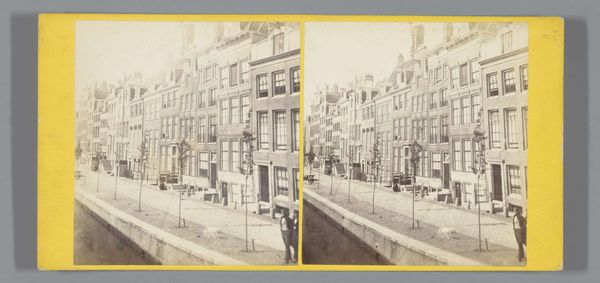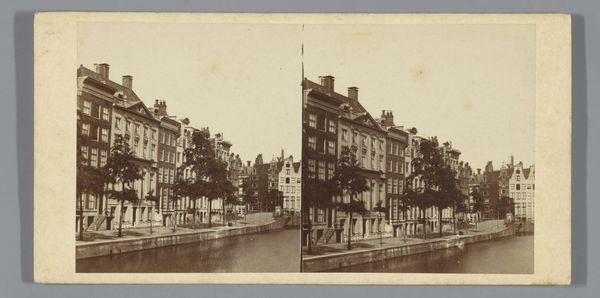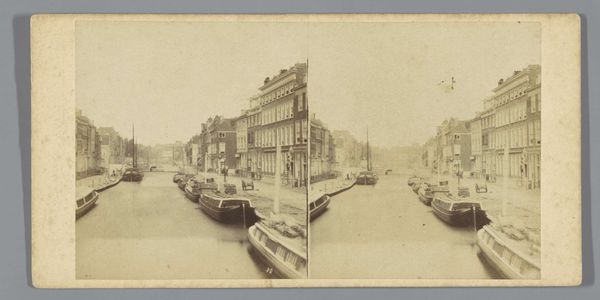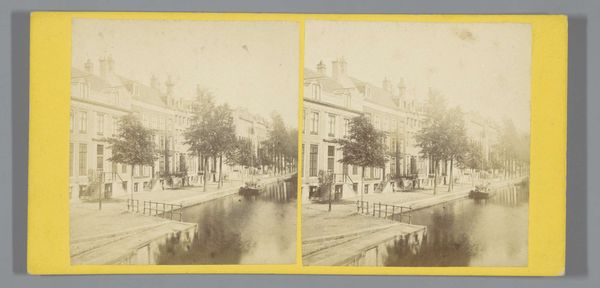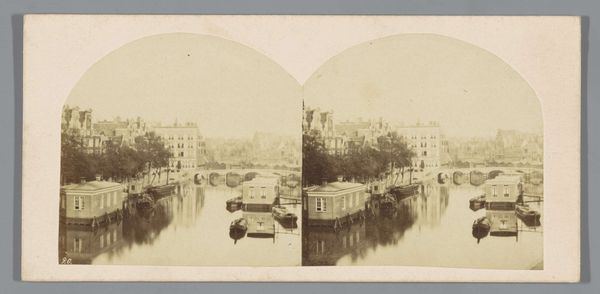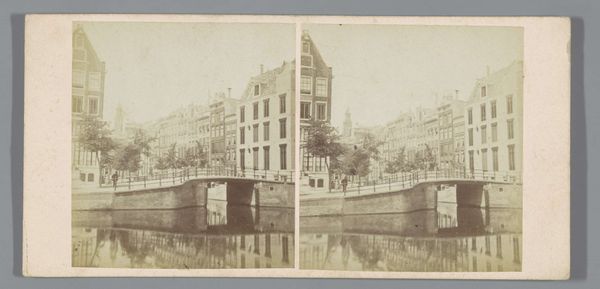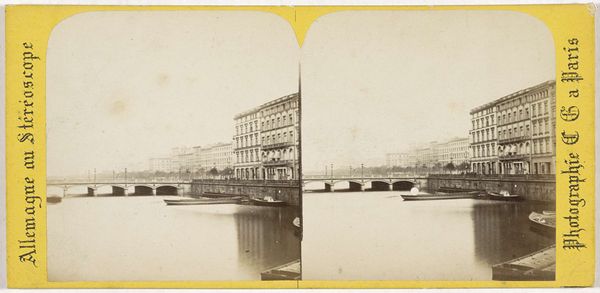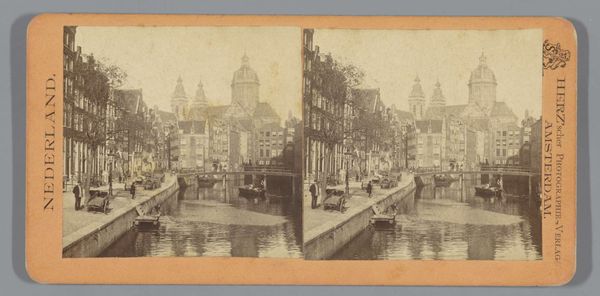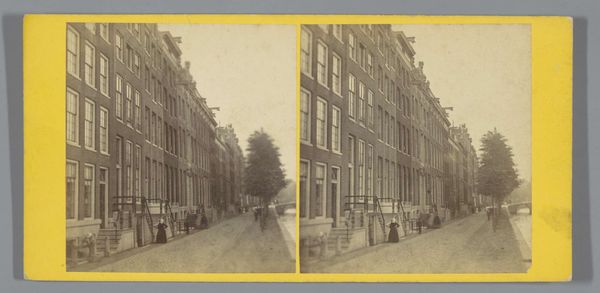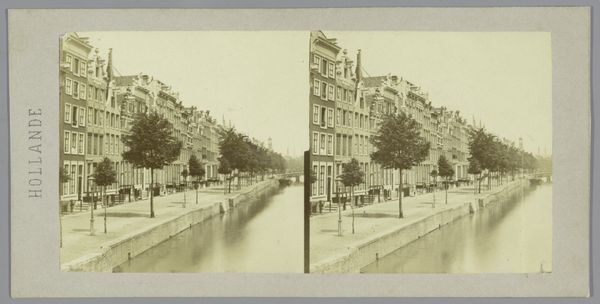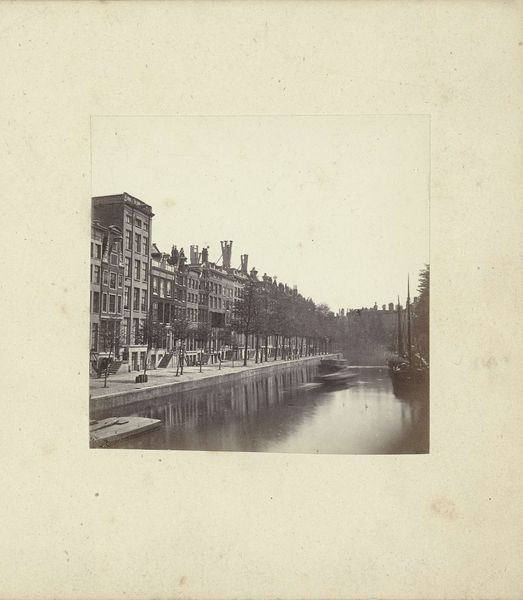
Gezicht op de Keizersgracht bij de Leidsegracht in Amsterdam 1860 - 1885
0:00
0:00
pieteroosterhuis
Rijksmuseum
photography, gelatin-silver-print
#
street-photography
#
photography
#
gelatin-silver-print
#
cityscape
#
street
#
realism
Dimensions: height 83 mm, width 170 mm
Copyright: Rijks Museum: Open Domain
Pieter Oosterhuis made this stereograph of the Keizersgracht in Amsterdam using photography, a process that, in its time, was both cutting-edge technology and a rapidly expanding industry. The photographic process itself is key to understanding this image. Light, captured on a treated glass plate, then fixed through chemical development. This was a far cry from the painstaking work of painting or engraving, and photography democratized image-making, documenting urban life with unprecedented realism. The twin images create a three-dimensional effect when viewed through a stereoscope. This was a popular form of entertainment, allowing viewers to experience a sense of presence in distant locales. But beyond the novelty, consider what photography meant for labor. It displaced many artists who relied on portraiture or landscape for their livelihoods, while simultaneously creating new jobs for photographers, chemists, and factory workers producing equipment. In Oosterhuis's photograph, we see not just a canal, but also a reflection of a changing society, one where technology and industry were reshaping both art and everyday life.
Comments
No comments
Be the first to comment and join the conversation on the ultimate creative platform.
